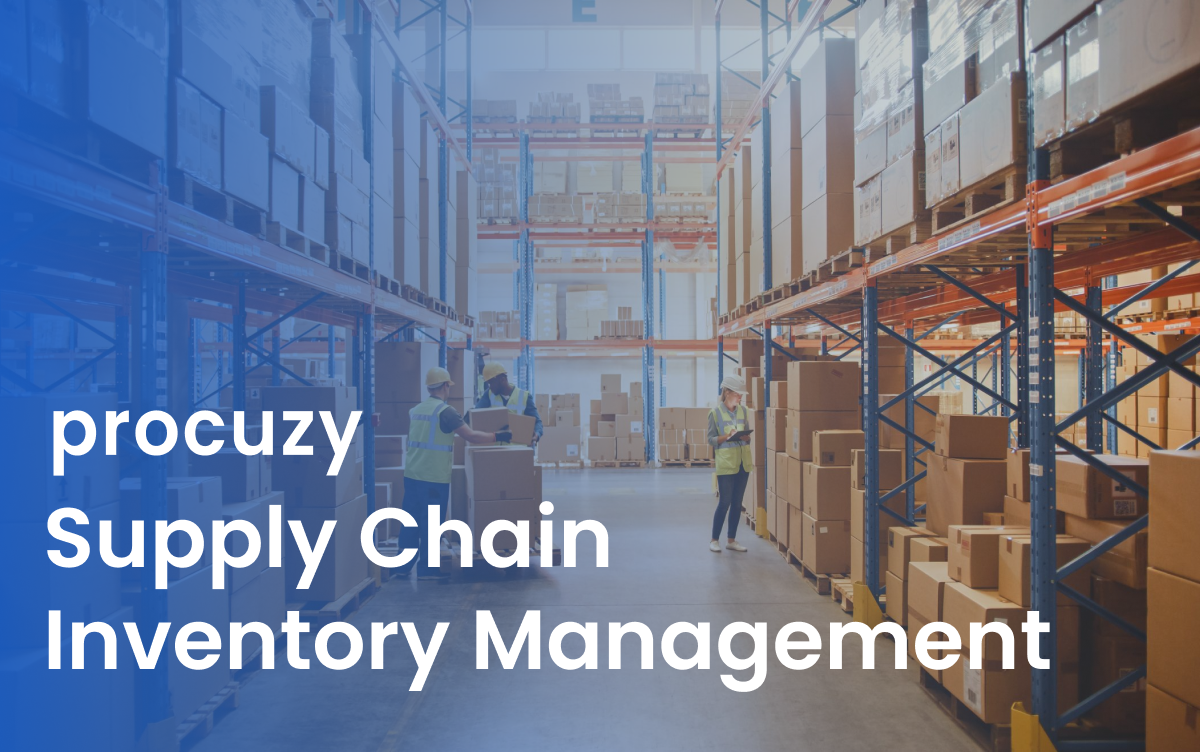
Supply chain inventory management is an essential skill required in a manufacturing unit. For a successful business, inventory management cannot be ignored. Every manufacturing unit must work towards advancing supply chain inventory management for a smooth and hassle free process.
The planning and executing of the production, controlling the supply chain operations, transportation and delivery of final goods to the customers, money transactions and billings, looking after the logistics, customer help service, and even production planning and scheduling, all revolve around supply chain inventory management.
In today's market scenario, the supply chain market is rapidly rising. Supply chain can be understood as the network of all the individuals, organisations, manufacturing units, resources, activities and technology involved in the creation and sale of a product. The significance of the Supply Chain Market (SCM) today is more than ever. In this article, we will cover what supply chain inventory management is, why it is important to know about, what are the key components of supply chain inventory management, and what are the possible risks associated with it. Read till the end to know everything about supply chain inventory management and make your business a hit!
What is supply chain inventory management?
Through inventory management, manufacturing units or businesses identify, recognize and plan which stock to purchase at the given point of time. Inventory management also deals with the quantities in which the stock needs to be ordered. Keeping this as a regular practice ensures that at any point of time, there's enough stock to fulfill any demands of the customers and avoid running out and shortages. Also, it ensures that there isn't plenty of stock stacked, leading to surplus. No company would want more stock than the sales. So, inventory turnover is recorded to ensure proper balance between stock and sales. An inventory turnover determines how often a stock is disposed off in a given period of time.
Before the inventory is sold, it is sort of an expenditure for the business. Although on the balance sheet, it is reported as an asset. When the inventory is sold, it becomes revenue for the business. So naturally, any business would not want too much stock as it costs money to them and reduces the cash flow. A business would also not want less stock than what is required. Hence, inventory management becomes important to manage these gaps.
Why is supply chain inventory management important?
Once we understand what supply chain inventory management means, we start understanding that it has some importance in the manufacturing unit. It helps keep balance between stock and sales. Through inventory management, it can be made sure that there isn't too less stock than required to fulfil customer's demands, and also that there isn't a surplus of stock hanging around in the godown, which isn't required because the stock is outdoing the sales.
Inventory management also increases efficiency and profits for a business. In a supply chain, inventory management focuses on the inflow and outflow of goods. Tracking of stock and final goods is a part of inventory management. Storing also comes in this domain. Through inventory management, maintenance of the right amount of stock levels, making certain that the right stock and final goods are available at the right time and place. This tracks the flow of goods and services. Through all this, and much more, inventory management plays a crucial role in guaranteeing success, quality, and satisfaction of the customers.
Not only does it improve the efficiency of work in a manufacturing unit, it also helps save money. Through inventory management, delivery timings can be improved. We can understand more about supply chain inventory management through three phases-
PHASE 1- Purchasing of inventory
Purchasing inventory is the first phase. Here, the right stock is identified. The quality is looked after. The right quantity of the stock is determined. Upon completion of these steps, the raw materials/stock is purchased and is brought down to the manufacturing unit safely.
PHASE 2- Maintenance of inventory
Maintenance is very important. If the inventory is not properly maintained in the godown or warehouse, it can get spoilt under certain circumstances and the money spent on purchasing and transporting the inventory to the warehouse will be flushed down the drain. Hence, strategy needs to be made over how to safely store the inventory until it is brough to use.
PHASE 3- Selling of inventory
In this phase, final goods are controlled and made available for sale. When customers place orders, the goods are then transported to the customers safely. This is the phase when profits are generated over the sale of the finalised goods.
Advantages of Inventory management
Inventory management comes with several benefits for a company. Let's see some of the advantages associated with supply chain inventory management:
Fulfil orders on time- Through inventory management, it can be made sure that there isn't too less stock than required to fulfil customer's demands. When the right amount of stock is available with the company, they go ahead and fulfil customer's orders on time.
Save costs- Through an understanding of stock trends, you can determine in what quantities of stock, and where you have something in stock so you’ can strategically be able to use the stock you have. It also allows you to control the quantity of stocks so that there isn't a surplus and a balance is maintained between stock and sales. This would help companies to avoid anh wastage of inventory, thereby saving costs.
Key aspects of supply chain inventory management-
Production planning- Production planning involves tactical and calculated decision making of in what manner every further step will be taken. Allocation of raw materials and resources to produce best results in a cost effective manner is also thought of during production planning.
Production scheduling- Production scheduling refers to making a thorough and extensive timeline of the production activities. Through production scheduling, every activity can be held on specified time and order. This will help minimise wastage of time and efforts and help deliver the products or services to the customers on time. Proper coordination, timely delivery of products, minimum wastage of time, maximum utilisation of raw materials can be guaranteed by production scheduling.
Sourcing- In this aspect of supply chain inventory management, suppliers are identified, contracts are negotiated and built, and professional relationships are maintained.
Production- Looking after the manufacturing process, including planning and scheduling, quality control, cost control, and smooth operation.
Transportation- Managing and controlling the transportation of goods from warehouse to the customer.
Inventory Management- Determining quantities in which the stock needs to be ordered. Through this, it can be made sure that there isn't too less stock than required to fulfil customer's demands.
Challenges and risks associated with inventory management-
Changing customer demands- Demands of the customers keep changing, sometimes even during mid-process. This emerges as a big challenge for the company to keep up with the changing demands of the customers and be prepared for customization.
Changing seasonal demands-
If inventory management is not planned, it may lead to overstocking of inventory. Now, since some demands are seasonal in nature and require different raw materials, the overstocked inventory will go to waste. Hence, the challenge is to stock the right quantity of inventory.
Different types of inventory
There are twelve different types of inventory. They are-
Raw materials
Work in progress (WIP)
Finished goods
Decoupling inventory
Safety stock
Packing materials
Cycle inventory
Service inventory
Transit
Theoretical
Excess and maintenance
Repair and operations (MRO)
Inventory management FaQs
Q) Why inventory management is important in a supply chain?
Inventory management is important in the supply chain as all the core processes of manufacturing revolve around inventory management. In a supply chain, inventory management focuses on the inflow and outflow of goods. Tracking of stock and final goods is a part of inventory management. Storing also comes in this domain. Through inventory management, maintenance of the right amount of stock levels, making certain that the right stock and final goods are available at the right time and place. This tracks the flow of goods and services. Through all this, and much more, inventory management plays a crucial role in guaranteeing success, quality, and satisfaction of the customers.
Q) What is the main objective of inventory management?
The main objective of inventory management is to fulfil the demands of the customers on time, provide the best quality while keeping the costs to the minimum.
Q) How to improve inventory management?
Inventory management can be improved by looking after the manufacturing process, including planning and scheduling, quality control, cost control, and smooth operation.
Inventory management with Procuzy
As you may have understood, inventory management plays a very crucial role in any business. Through inventory management, manufacturing units or businesses identify, recognize and plan which stock to purchase at the given point of time. At Procuzy, we provide solutions for managing and optimizing supply chain processes from source to procurement. Its features include inventory management, sales and distribution, analytics and integration, production management, and more. Keep reading with Procuzy to enhance your business and get your edge in the competition!


